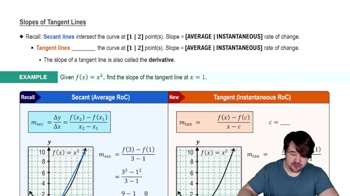Use the given graphs of f and g to find each derivative. <IMAGE>
d/dx (f(f(x))) |x=4
 Verified step by step guidance
Verified step by step guidance Verified video answer for a similar problem:
Verified video answer for a similar problem:



 5:02m
5:02mMaster Intro to the Chain Rule with a bite sized video explanation from Patrick
Start learning